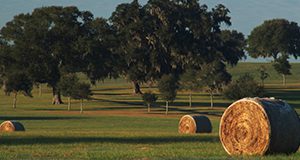Everyone likes a good bargain, but when it comes to hay, low price often equates to low nutritional value. Because hay is often sold on a large round-bale basis, savings from the good bargain can decrease substantially if there is a negative impact on the cow herd nutritional program. This 4-page fact sheet discusses intake limitations, energy limitations, protein limitations, examples of hay quality, and bad hay’s impact on cow body condition. Written by Matt Hersom and Todd Thrift, and published by the UF/IFAS Department of Animal Sciences, February 2018.
http://edis.ifas.ufl.edu/an339
Tag: hay
Herbicide Residues in Manure, Compost, or Hay
When purchasing compost, it is important to understand that some manure-based products can contain herbicide residues that can affect the growth of certain plants. Manure from animals that have been fed forage treated with aminopyralid or other closely related herbicides, such as clopyralid or picloram, can be contaminated with these herbicides, which severely restrict the growth of legume and solanaceous crops and other broadleaf plants. This 3-page fact sheet discusses aminopyralid, compost, questions to ask when purchasing bulk compost or mulch, conducting a bioassay, aminopyralid injury symptoms, and steps to consider if contaminated manure or compost has been added to a garden or field site. Written by Jason Ferrell, Peter Dittmar, and Brent Sellers, and published by the UF Agronomy Department, May 2017.
http://edis.ifas.ufl.edu/ag416

